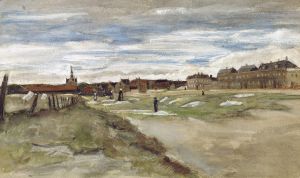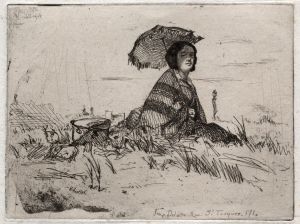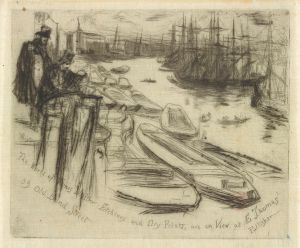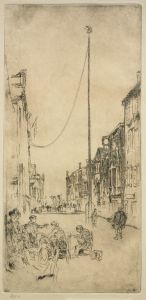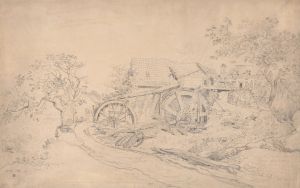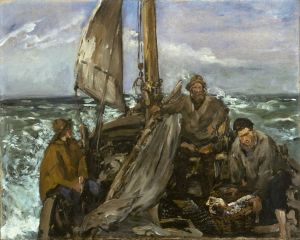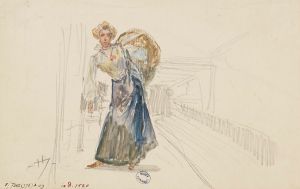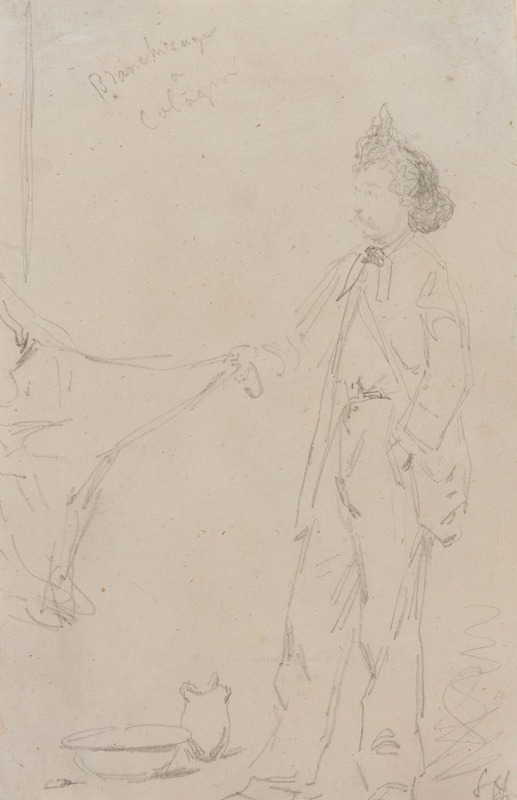
Blanchissage a Cologne
A hand-painted replica of James Abbott McNeill Whistler’s masterpiece Blanchissage a Cologne, meticulously crafted by professional artists to capture the true essence of the original. Each piece is created with museum-quality canvas and rare mineral pigments, carefully painted by experienced artists with delicate brushstrokes and rich, layered colors to perfectly recreate the texture of the original artwork. Unlike machine-printed reproductions, this hand-painted version brings the painting to life, infused with the artist’s emotions and skill in every stroke. Whether for personal collection or home decoration, it instantly elevates the artistic atmosphere of any space.
James Abbott McNeill Whistler was an American artist known for his paintings and etchings, and he played a significant role in the 19th-century art movement. However, there is no widely recognized painting titled "Blanchissage a Cologne" attributed to Whistler. It is possible that the title might refer to a lesser-known work or a misattribution. Whistler's oeuvre is extensive, and he is best known for works such as "Arrangement in Grey and Black No. 1," commonly known as "Whistler's Mother," and his series of "Nocturnes."
Whistler was born on July 11, 1834, in Lowell, Massachusetts, and spent much of his career in Europe, particularly in London and Paris. He was a proponent of "art for art's sake," emphasizing the aesthetic experience over narrative content. His style was influenced by the Realism of Gustave Courbet and the tonalism of the French Impressionists, but he developed a unique approach that focused on mood and atmosphere.
Whistler's work often explored themes of beauty and harmony, and he was known for his use of color and composition. He frequently used musical terms to title his works, such as "Symphony," "Nocturne," and "Arrangement," reflecting his belief in the parallels between painting and music. This approach was part of his broader aesthetic philosophy, which sought to elevate the visual arts to the level of music in terms of emotional and intellectual impact.
Throughout his career, Whistler was involved in several controversies, most notably his libel suit against the art critic John Ruskin. Ruskin had criticized Whistler's painting "Nocturne in Black and Gold: The Falling Rocket," accusing him of "flinging a pot of paint in the public's face." Whistler won the case but was awarded only a farthing in damages, which led to financial difficulties.
Whistler's influence extended beyond his paintings. He was a key figure in the Aesthetic Movement, which sought to promote beauty and art as central to life. His ideas and works influenced many artists and movements, including the Symbolists and the Art Nouveau movement.
In addition to his paintings, Whistler was an accomplished etcher and lithographer. His etchings, particularly those of Venice and London, are highly regarded for their detail and atmospheric quality. These works contributed significantly to the revival of etching as a major art form in the late 19th century.
Whistler's legacy is evident in the continued appreciation and study of his work. His emphasis on aesthetic experience and his innovative approach to composition and color have left a lasting impact on the art world. Despite any controversies or challenges he faced during his lifetime, Whistler is remembered as a pioneering artist who helped shape the course of modern art.
If "Blanchissage a Cologne" is indeed a work by Whistler, it remains obscure and not widely documented in the available literature on his life and works. Therefore, no specific information can be provided about this particular painting.







